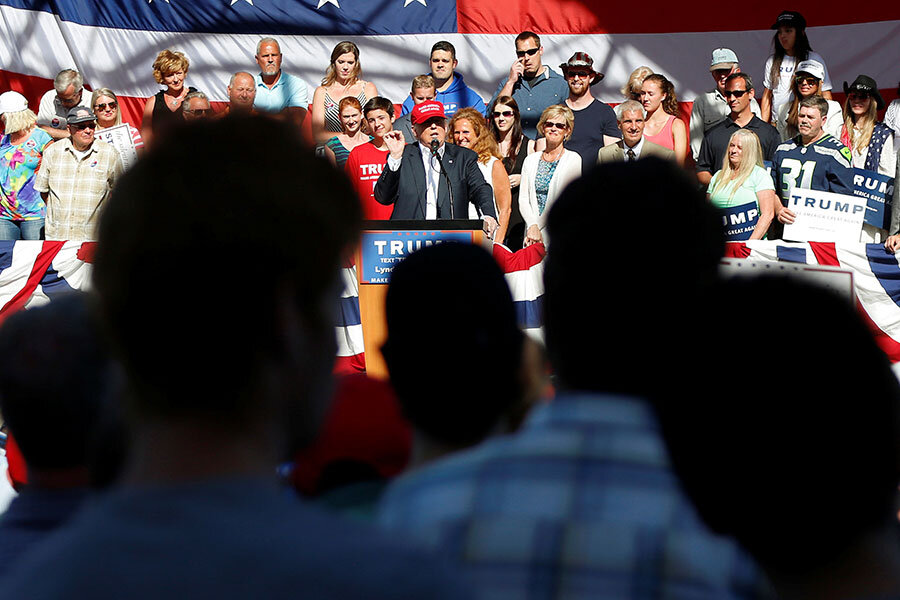Are rallies Donald Trump's political secret weapon?
Loading...
Are rallies Donald Trump’s secret weapon?
He thinks they are. In a series of interviews during the past several days, he’s outlined a general election campaign that will be light on high-tech voter outreach and heavy on old-fashioned mass meetings.
“My best investment is my rallies,” Mr. Trump told the Associated Press Tuesday. “The people go home, they tell their friends they loved it. It’s been good.”
Trump’s commitment to rallies can be seen in the fact that he’s continued to hold them in upcoming primary states such as Washington even though he’s essentially clinched the Republican presidential nomination.
“Word of mouth is the No. 1 thing. And the word of mouth at my rallies is like, ‘You’ve got to go see it’,” said Trump in a New York Times interview published Wednesday. “And you know, one person goes and they talk about it to 20 people.”
Well, to this point rallies have been good for Trump, obviously. He’s drawn huge crowds while dispatching all his GOP rivals. Maybe that’s due to the word of mouth they generate. More likely it’s because the big meetings have often served essentially as infomercials, with cable news broadcasting large chunks of them live.
They’ve drawn intense media coverage in part due to the Trump rally lure of danger and possible violence. “Will a protester be forcibly expelled tonight? Will there be punching? We’ll find out, possibly, after this commercial break.”
But it’s unlikely Trump will find rallies effective as a main fall election tool.
In part this is due to the fact that political rallies are inefficient in general. Word of mouth can be good or bad. Trump’s speeches tend to ramble, since they’re delivered ad hoc. His followers may cram arenas to hear him, but at some rallies they drift off early as well.
Big crowds are great and energize candidates, but they’re not predictive. If they were, Bernie Sanders would have locked up the Democratic nomination long ago. Remember that huge rally Sanders held in Brooklyn before the New York primary? Even he was stunned by the size: at least 28,000 people crammed into Prospect Park.
Well, he lost the New York primary to Hillary Clinton. And he lost Brooklyn, too ... by 20 points.
But the biggest reason rallies may fall short of Trump’s electoral expectations is sheer scale. Their practical effects get lost in the size and sweep of a fall campaign. A general election isn’t like a primary campaign, with state elections spaced out along a five-month period. Everybody votes at once – and Trump will need many more votes than he’s drawn already.
So far, The Donald’s drawn about 10.5 million votes, according to a back-of-the envelope calculation. Two big states – California and New Jersey – haven’t yet held their primaries, so that number will bump up.
But he’ll need approximately six times that amount to win a general election. President Obama won 66 million votes in 2012. Mitt Romney got 61 million in a losing effort.
Holding a rally and then hoping every attendee tells 20 people about it won’t produce those kinds of numbers. There aren’t enough rally-holding hours in the days between now and November.
Campaign activities aren’t the sole means of producing votes, of course. Lots of Republicans will vote for Trump just because he’s the GOP nominee, #NeverTrump pleas notwithstanding.
But our guess is that Trump will discover the virtues of paid political advertising to shore up his numbers in the fall.








